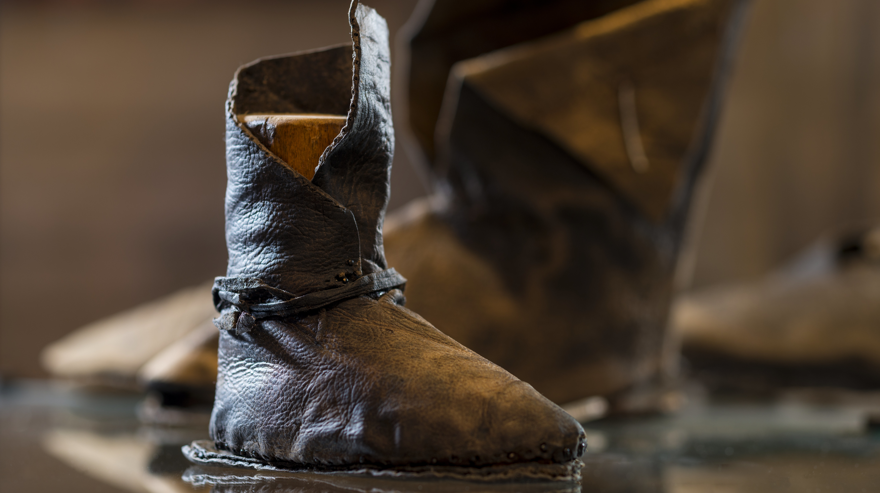Childhood in the middle ages

We know a bit about what it was like to grow up in the Middle Ages. In Lödöse, archaeologists have found balls, toy axes and swords, bark boats, and more, showing that children were allowed to be children. And in the so-called miracle stories, we can gain insights into medieval life.
Most people did not have the opportunity to go to school. In Lödöse there were both a school and a monastery, but studying cost money. Therefore, most children learned the tasks that needed to be done by working alongside their parents and other adults. Children could also have the opportunity to become apprentices to talented craftsmen.
But, a significant number of children's shoes from medieval Lödöse have been discovered. Some were even made for infants - an extravagant luxury product indicating that there were wealthy inhabitants as well in Lödöse.
Miracle stories
A miracle story is a recorded testimony intended to justify someone becoming a saint or to describe a miracle. Through these stories, we get closer to the lives of medieval people. In the miracle stories, we learn about some of the accidents that children experienced while working and playing. Cuts and falls from great heights were not uncommon.
Play and stories
When darkness fell, people would gather around the fire and work on tasks that could be done in the dim fire light. Since there were no divisions between children and adults in ordinary households, play and socializing across age groups were natural. Entertainment often consisted of listening to old tales about knights and saints in foreign lands and playing dice and board games.
Reaching adulthood early – If they survived
Growing up was not a given. Only two out of three children lived longer than a year. Childhood ended much earlier than it does today, one was considered an adult as early as fifteen or sixteen years old.






